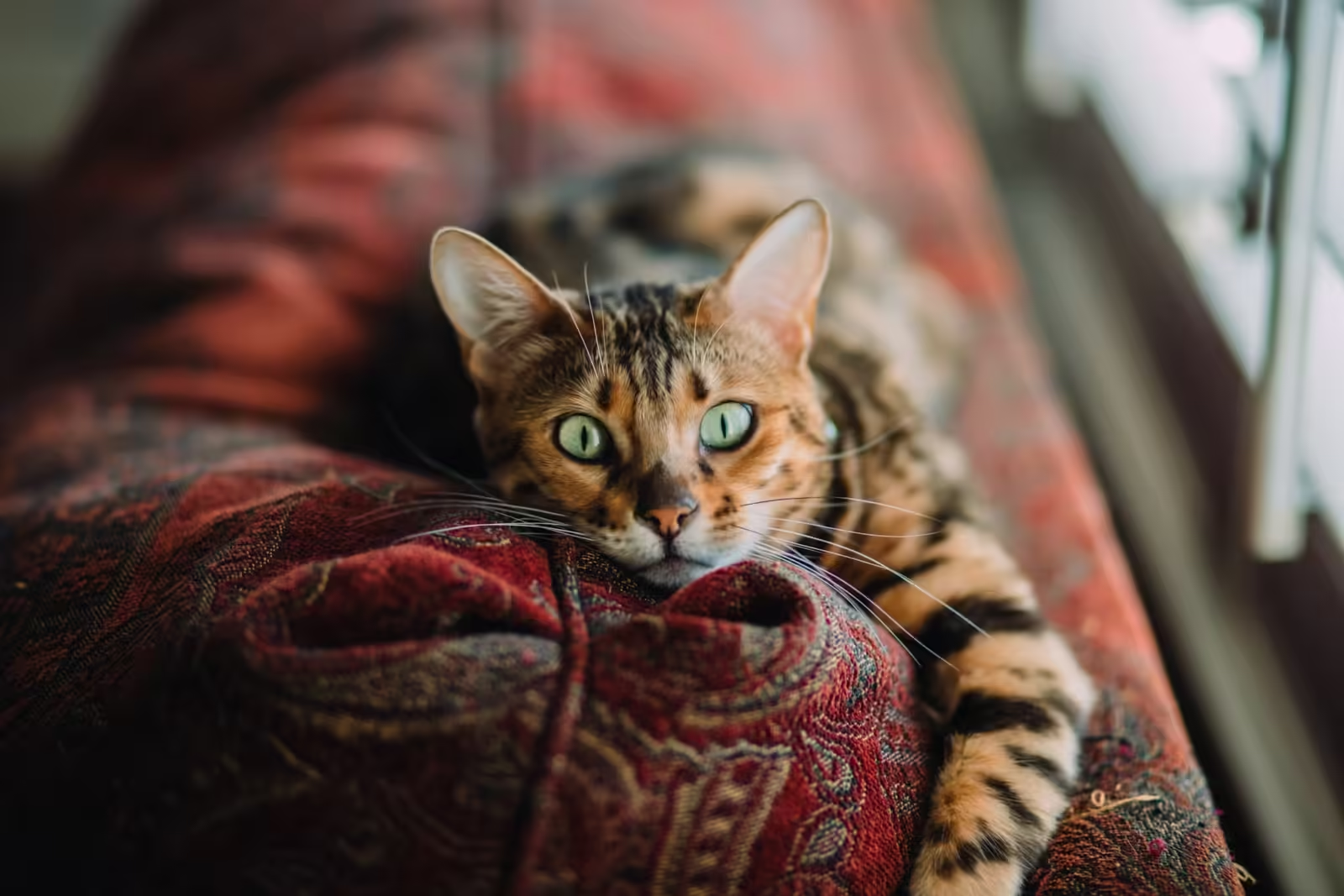Cats are known for their quirky behavior and unique reactions to various stimuli, but one reaction that has puzzled many pet owners is their sudden fear of cucumbers. Videos of cats leaping away from cucumbers have gone viral, sparking widespread curiosity. But why are these seemingly harmless vegetables so frightening to our feline friends? In this blog, we’ll explore the reasons behind this fear, drawing on insights from veterinarians and animal behaviorists.
1. The Element of Surprise
One of the primary reasons cats react so strongly to cucumbers is the element of surprise. When a cucumber is placed quietly behind a cat while it’s eating or distracted, the cat is startled when it turns around and sees the unfamiliar object. This sudden appearance can trigger a strong startle response, causing the cat to jump away in fear. This reaction is not necessarily specific to cucumbers; any unexpected object could provoke a similar response.
2. Evolutionary Instincts
Cats have evolved as predators and prey in the wild, and their instincts are finely tuned to detect potential threats. In their natural habitats, sudden or unfamiliar objects can signal danger. The cucumber’s shape and color may resemble something a cat’s ancestors would have found threatening, such as a snake. This resemblance could trigger a heightened fear response, even though cucumbers are harmless.
3. Novelty and Unfamiliarity
Cats are creatures of habit and often feel more secure in their familiar environment. Novel objects, especially ones that appear suddenly and without explanation, can be unsettling. Cucumbers are not a part of a cat’s usual environment or diet, so their presence can cause confusion and anxiety. This unfamiliarity can contribute to the fear response.
4. Sensory Perception
Cats have highly developed senses, particularly their sense of sight and smell. Cucumbers have a distinct smell and texture that cats might find strange or unsettling. Additionally, the way a cucumber appears when it suddenly emerges can be visually jarring to a cat, further contributing to its fearful reaction.
5. Stress and Anxiety
Exposing a cat to a sudden scare, like a cucumber, can increase its overall stress and anxiety levels. While the initial reaction might be brief, the fear can linger, making the cat more anxious in general. This can lead to long-term behavioral issues, including avoidance of certain areas or objects, and even changes in eating or litter box habits.
6. The Role of Social Media
The trend of scaring cats with cucumbers gained popularity through social media, where videos of cats reacting dramatically went viral. While these videos might seem entertaining, they can contribute to unnecessary stress for cats. Social media can perpetuate the idea that it’s funny to scare cats with cucumbers, but it’s essential to consider the potential negative effects on the cat’s well-being.
7. Veterinarian Perspectives
Veterinarians emphasize the importance of understanding that fear and anxiety are not to be taken lightly in pets. According to Dr. Julie Buzby, a veterinarian with a focus on feline behavior, exposing cats to unexpected stimuli can have adverse effects on their mental and emotional health. “Cats are sensitive creatures, and their fear responses can lead to long-term stress. It’s crucial to provide a safe and predictable environment for them.”
Dr. Elizabeth Colleran, another veterinarian and feline behavior specialist, adds, “The cucumber phenomenon highlights how easily our pets can be startled. It’s important for pet owners to recognize that what might seem like harmless fun to us can be very distressing for our cats.”
8. Alternatives to Scaring Your Cat
Instead of using cucumbers or other startling objects, there are many positive ways to engage with your cat. Providing interactive toys, engaging in play sessions, and offering treats can create a stimulating and enjoyable environment for your feline friend. Building a bond through positive interactions helps reduce stress and enhances the overall well-being of your cat.
9. Understanding Your Cat’s Behavior
To create a more comfortable environment for your cat, it’s helpful to understand their body language and behavior. Signs of stress or anxiety in cats can include hiding, excessive grooming, changes in appetite, and vocalizations. If you notice these signs, it might be worth consulting a veterinarian or a feline behaviorist to address any underlying issues.
10. Conclusion
The fear of cucumbers in cats is a fascinating example of how our pets react to unexpected and unfamiliar stimuli. While the sight of a cat jumping away from a cucumber might seem amusing, it’s essential to recognize the potential stress it can cause. Understanding the reasons behind this fear helps us create a more supportive and nurturing environment for our feline companions. By focusing on positive interactions and respecting their sensitivities, we can ensure our cats lead happy and healthy lives.











Leave a Reply